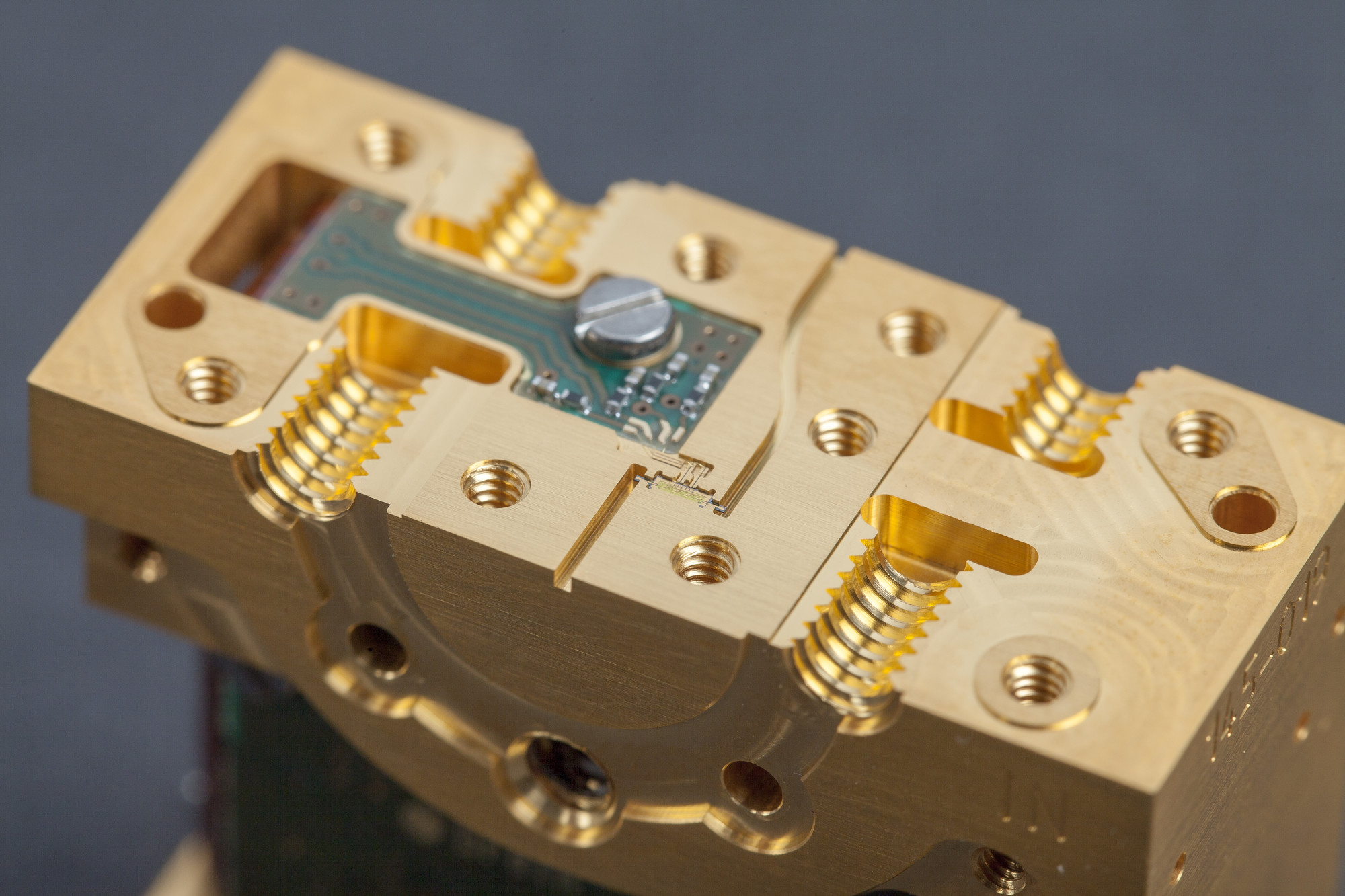Technologies for the sixth generation of mobile communications
Wireless data networks will have to enable ever higher transmission rates and shorter latency in the future. This requires network structures consisting of many small mobile radio cells. To connect these cells, high-performance transmission links at high frequencies up to the terahertz range are required.


Researchers from the Karlsruhe Institute of Technology (KIT) and the Fraunhofer Institute for Applied Solid State Physics IAF in Freiburg are working together on technologies to convert data signals from terahertz transmission to optical transmission. Fraunhofer IAF supports this work by developing very low-noise receiver circuits and high performance transmission amplifiers.
While the new 5G mobile phone standard is still being tested, researchers are already working on technologies for the next generation of wireless data transmission. 6G is intended to enable significantly higher transmission rates, shorter latency, greater device density, and the integration of artificial intelligence. On the road to the sixth generation of mobile communications, many challenges for the networking of many small mobile radio cells have to be overcome.
For example, the wireless networks of the future will consist of a large number of small mobile radio cells, within which high data volumes are transmitted quickly and energy-efficiently. To network these cells, radio links are needed that can transmit dozens or even hundreds of gigabits per second on a single channel. For this purpose, frequencies in the terahertz range, which lie in the electromagnetic spectrum between microwave and infrared radiation, are best suited. Another task is to seamlessly connect wireless transmission links with fiber-optic networks in order to combine the advantages of both technologies – high capacity and reliability with mobility and flexibility.
Use of ultrafast electro-optical modulators
Several groups of researchers have developed a promising approach to the conversion of data streams from terahertz transmission to optical transmission. The institutes involved are the KIT Institutes of Photonics and Quantum Electronics (IPQ), Microstructure Technology (IMT), and High Frequency Technology and Electronics (IHE) as well as Fraunhofer IAF. They use ultra-fast electro-optical modulators to convert a terahertz data signal directly into an optical signal, thereby coupling the receiver antenna directly to an optical fiber.
In their experiment, the scientists use a carrier frequency of about 0.29 THz and achieve a transmission rate of 50 Gbit/s. The modulator used is based on a plasmonic nanostructure and has a bandwidth of more than 0.36 terahertz. With its help, the technical complexity of future mobile radio base stations can be drastically reduced. Terahertz connections with enormously high data rates are thus made possible – several hundred Gbit/s are conceivable.
Last modified: